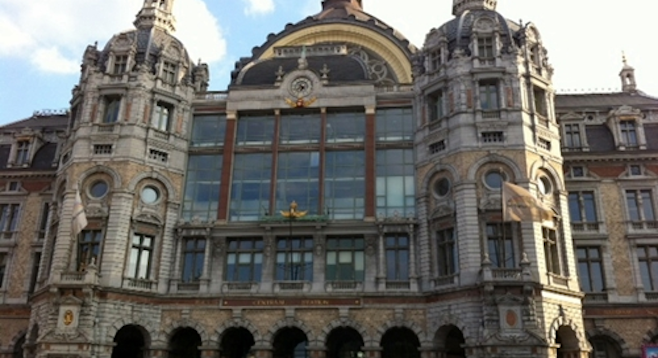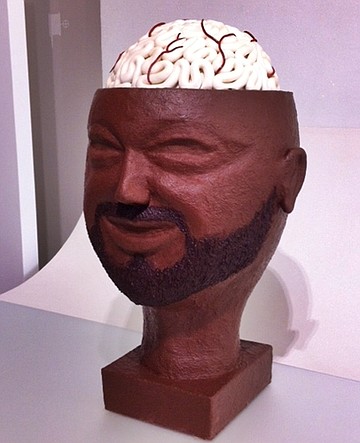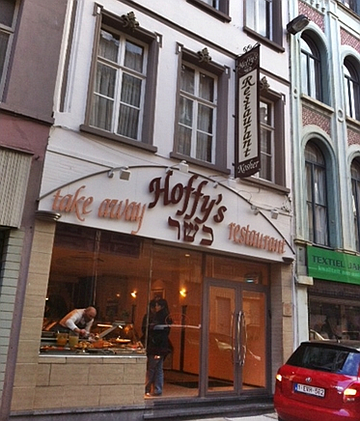 Facebook
Facebook
 X
X
 Instagram
Instagram
 TikTok
TikTok
 Youtube
Youtube

I got off the train to Antwerp, Belgium, at Central Station, named by Newsweek as the fourth most beautiful train station in the world, just around the crack of dawn.
The town square was lifeless, but it gave me a non-intimidating chance to see its many attractions: the city zoo, take-out joints, cafés, an aquarium, Chinatown’s entrance... blessedly my hotel and soon a major convention center.
I knew that Antwerp had great significance for hundreds of years for Europeans, but I didn’t know its connection to the U.S. The city's official language is Dutch, but most people have a fair grasp of English.
Where to stay. For location alone, you can’t beat the Radisson Blu Antwerp. If you do need to get to the outlying areas of the city, the subway is next door. They have an indoor pool and hot tub, as well as deep bathtubs: pretty uncommon for a European hotel. In the morning, the hotel’s restaurant is set up for their substantial breakfast buffet, where floor-to-ceiling windows offer a scenic vista onto the train station and city square.
What to do. There are several museums and tourism activities adjacent to the city port, once one of the most important in the world. Coming in September is the Red Star Line Museum (which promises to be free admission, but with reservations required). Many immigrants into Ellis Island made their first connection though Antwerp, and the museum hopes to help genealogists discover missing pieces to their family stories.
There’s also a district that has many important churches all built near each other, with one of the most interesting being St. Paul’s Church, restored after a fire in 1679. Free to enter, the church houses what any museum in the world would frothingly envy: 50 paintings by masters such as Rubens and Van Dyck as they were meant to be seen. There are also 200 sculptures, carved furniture pieces and other priceless treasures.
Next to the church is a life-size Calvary sculpture garden dating from the 18th century. The former church-affiliated buildings that surround it now are luxe townhomes; I laughed at the idea of neighbors holding picnics in the Calvary garden after it closes to the public at sundown.

Steps away from the religious district – either intentionally or ironically – is Antwerp’s red light district. Unlike that of Amsterdam, prostitution is “not legal, but tolerated and taxed.” I can tell you as a criminal defense attorney that if one is not arrested for an activity and the government gets tax revenue, the legal differences between the two are mostly theoretical in nature. They have all the same stuff: women in lingerie standing bored in windows.
I found on the edge of the red light district something much more my speed: a cool vintage store with loads of stuff from the 1950s through the 1970s. In the spirit of a “6 of one, half dozen of the other” concession to the district, I found and bought a “Love Is” hot chocolate pitcher written in Dutch (left). My husband finds the pitcher and the cartoon’s whole concept – with the couple’s naked pre-pubescent bodies – 100% creepy.

Where to eat. The world over has heard about the mystique of Belgium chocolate. If its most celebrated artist, Dominique Persoone, were in the U.S., he’d already have a TV show and cookware line. He’s considered a rock star of chocolate – apropos since he created snortable chocolate and ginger powder for the Rolling Stones. His shop in Antwerp is decadently located in a former palace.
In looking for an authentic Belgian lunch experience, there are a number of things that should be on your checklist: locals eat there, they serve classic Belgian favorites, have a number of microbrews on tap made within the city, and have decent coffee drinks to finish the meal. Appelman’s Brasserie hits all of those and has an especially rich Béarnaise sauce for their steak, redolent of fresh tarragon.

Behind the Central Station is Antwerp’s famous Diamond District, worked predominantly by Orthodox Jews.
Hoffy’s is a beloved gourmet kosher deli restaurant, frequently not just by their own community, but also as a chic ethic dining hangout. You’ll be able to get Ashkenazi favorites like gefilte fish, as well as Sephardic-style stewed chicken and fruit dishes. Of course, there’s no dairy served, and the restaurant is closed on Saturdays.


I got off the train to Antwerp, Belgium, at Central Station, named by Newsweek as the fourth most beautiful train station in the world, just around the crack of dawn.
The town square was lifeless, but it gave me a non-intimidating chance to see its many attractions: the city zoo, take-out joints, cafés, an aquarium, Chinatown’s entrance... blessedly my hotel and soon a major convention center.
I knew that Antwerp had great significance for hundreds of years for Europeans, but I didn’t know its connection to the U.S. The city's official language is Dutch, but most people have a fair grasp of English.
Where to stay. For location alone, you can’t beat the Radisson Blu Antwerp. If you do need to get to the outlying areas of the city, the subway is next door. They have an indoor pool and hot tub, as well as deep bathtubs: pretty uncommon for a European hotel. In the morning, the hotel’s restaurant is set up for their substantial breakfast buffet, where floor-to-ceiling windows offer a scenic vista onto the train station and city square.
What to do. There are several museums and tourism activities adjacent to the city port, once one of the most important in the world. Coming in September is the Red Star Line Museum (which promises to be free admission, but with reservations required). Many immigrants into Ellis Island made their first connection though Antwerp, and the museum hopes to help genealogists discover missing pieces to their family stories.
There’s also a district that has many important churches all built near each other, with one of the most interesting being St. Paul’s Church, restored after a fire in 1679. Free to enter, the church houses what any museum in the world would frothingly envy: 50 paintings by masters such as Rubens and Van Dyck as they were meant to be seen. There are also 200 sculptures, carved furniture pieces and other priceless treasures.
Next to the church is a life-size Calvary sculpture garden dating from the 18th century. The former church-affiliated buildings that surround it now are luxe townhomes; I laughed at the idea of neighbors holding picnics in the Calvary garden after it closes to the public at sundown.

Steps away from the religious district – either intentionally or ironically – is Antwerp’s red light district. Unlike that of Amsterdam, prostitution is “not legal, but tolerated and taxed.” I can tell you as a criminal defense attorney that if one is not arrested for an activity and the government gets tax revenue, the legal differences between the two are mostly theoretical in nature. They have all the same stuff: women in lingerie standing bored in windows.
I found on the edge of the red light district something much more my speed: a cool vintage store with loads of stuff from the 1950s through the 1970s. In the spirit of a “6 of one, half dozen of the other” concession to the district, I found and bought a “Love Is” hot chocolate pitcher written in Dutch (left). My husband finds the pitcher and the cartoon’s whole concept – with the couple’s naked pre-pubescent bodies – 100% creepy.

Where to eat. The world over has heard about the mystique of Belgium chocolate. If its most celebrated artist, Dominique Persoone, were in the U.S., he’d already have a TV show and cookware line. He’s considered a rock star of chocolate – apropos since he created snortable chocolate and ginger powder for the Rolling Stones. His shop in Antwerp is decadently located in a former palace.
In looking for an authentic Belgian lunch experience, there are a number of things that should be on your checklist: locals eat there, they serve classic Belgian favorites, have a number of microbrews on tap made within the city, and have decent coffee drinks to finish the meal. Appelman’s Brasserie hits all of those and has an especially rich Béarnaise sauce for their steak, redolent of fresh tarragon.

Behind the Central Station is Antwerp’s famous Diamond District, worked predominantly by Orthodox Jews.
Hoffy’s is a beloved gourmet kosher deli restaurant, frequently not just by their own community, but also as a chic ethic dining hangout. You’ll be able to get Ashkenazi favorites like gefilte fish, as well as Sephardic-style stewed chicken and fruit dishes. Of course, there’s no dairy served, and the restaurant is closed on Saturdays.
Comments